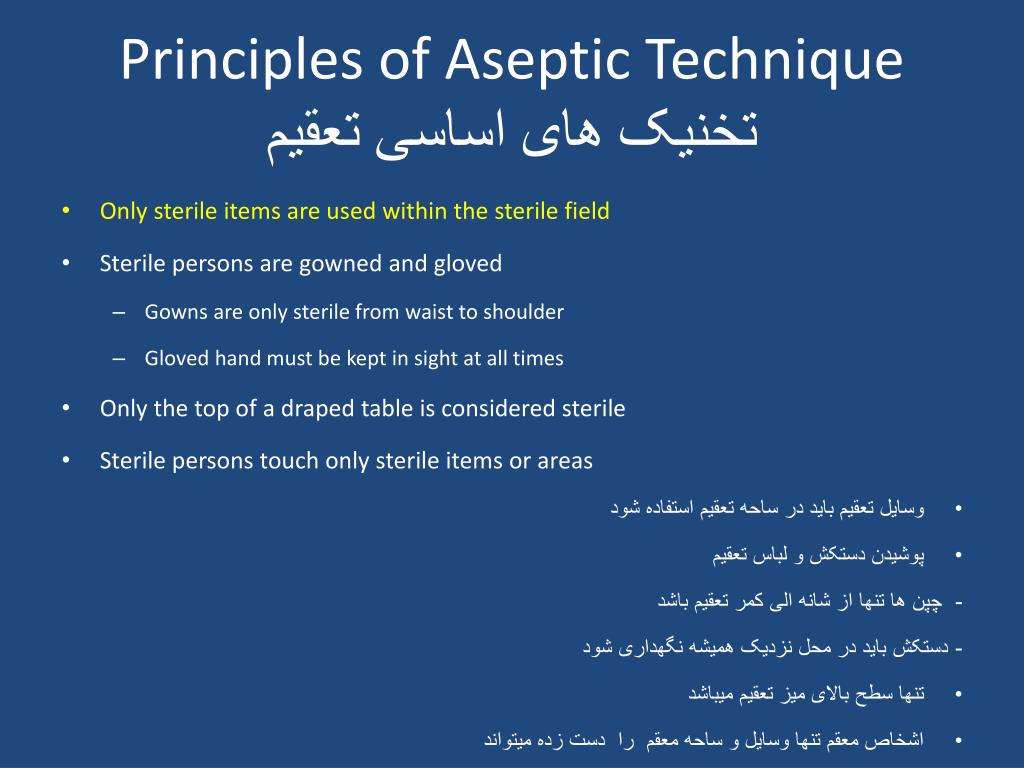

(Pathogens) include not only bacteria but also viruses, fungi, and parasites. If any link is broken the chain is broken and infection cannot be transmitted.

Medical or clean asepsis reduces the number of organisms and prevents their spread surgical or sterile asepsis includes procedures to eliminate microorganisms from an area and is practiced by surgical technologists and nurses. Surgical asepsis (“sterile technique”): practices that completely kill and eliminate microorganisms.Medical asepsis (“clean technique”): practices that kill some microorganisms to prevent them from spreading.Keeping sterilizing instrument inside plastic wrappers to prevent contamination before use.Sterilizing equipment and instruments before a procedure.
#Two types of aseptic technique skin
Disinfecting a patient’s skin using antiseptic wipes.Using aseptic techniques prevents the spread of infection by harmful germs.Purpose: a septic technique helps to prevent health care associated infection. A technique used the practice and procedure to prevent contamination from pathogens.

Aseptic technique: It is a standard health care practice that helps to prevent the transfer of germs to or from an open wound and other susceptible areas on a patient’s body.ASEPSIS: Asepsis is the state of being free from disease causing microorganisms such as bacteria, viruses, pathogenic fungi, and parasites.


 0 kommentar(er)
0 kommentar(er)
